 |
Convert RM to JPG/JPEG Sequence
|
JPG/JPEG is a commonly used method of lossy compression
for digital photography (image). The degree of compression can be adjusted, allowing
a selectable tradeoff between storage size and image quality. JPEG typically achieves
10:1 compression with little perceptible loss in image quality.
RM to JPG/JPEG Converter Software converts RM to JPG/JPEG
sequence files. So, you could get every frame image of RM in
JPG/JPEG format. You can also set output frame rate and JPG/JPEG resolution in
the software. The output JPG/JPEG files look something like the following screen
shot.
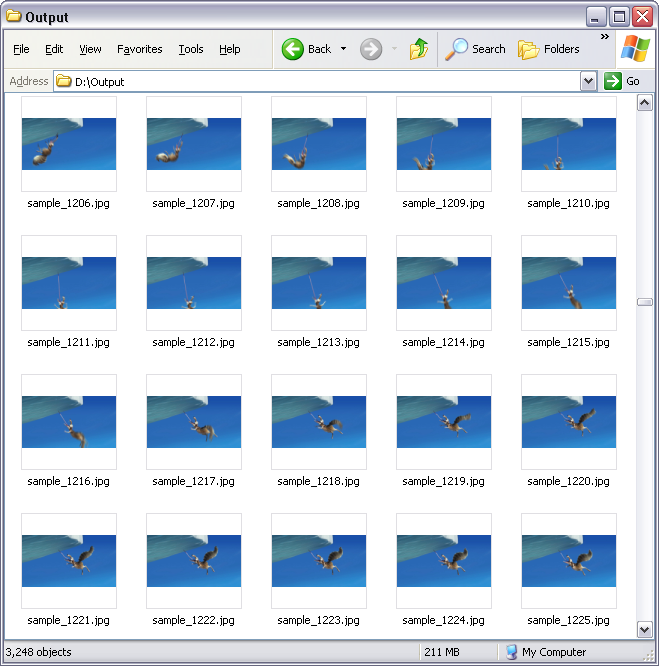
The software also supports other formats and portable devices such as 3G2, AIFF, OGV, PPM image sequence, Windows Phone, iPad, OGM,
etc. The software could convert OGV to M4V, DVD to OGM, MOD to 3G2, MKV to WebM (VP8), M4V to MKA, and so on.
RM to JPG/JPEG Software supports batch conversion and, is compatible
with Windows 10/8/7/Vista/XP/2000.

What is RM?
RealMedia Variable Bit Rate, or RMVB, is a variation of the .RM (RealMedia)
video format. RealMedia audio, RealMedia video and RealMedia RMVB are file
formats played on RealPlayer developed by RealNetworks. When RealAudio
was introduced, RealNetworks disclosed no technical details about the audio
format or how it was encoded, but it was soon noticed that some of the
audio codecs used in RealAudio were identical to those used in cellular
telephones and digital television. Typically these streams are in CBR (constant
bitrate), but a container for VBR (variable bitrate) streams, named RMVB
(RealMedia variable bitrate), has been developed. The format RMVB stands
for "Real Media Variable Bitrate," and is an alternative format
also used by RealPlayer and other online streaming programs. RealAudio
files are compressed using several different audio codecs. Each codec is
identified by a four character code. Below is a list of the codecs and
the version in which each was introduced: lpcJ, 14_4: IS-54 VSELP (RealAudio
1), 28_8: G.728 LD-CELP (RealAudio 2), dnet: Dolby AC3 (RealAudio 3), sipr:
Sipro Lab Telecom ACELP-NET (RealAudio 4/5), cook: G2/Cook Codec (RealAudio
6), atrc: Sony ATRAC3 (RealAudio 8), raac: MPEG-4 LC-AAC (RealAudio 9),
racp: MPEG-4 HE-AAC (RealAudio 10), and ralf: RealAudio Lossless Format
(RealAudio 10). Some programs might want RMVB, so if you have a video you
want to stream online in RM format, you'll have to convert. Recently, RealNetworks
has developed a new container for VBR (variable bitrate) streams, named
RMVB (RealMedia variable bitrate). Using HTTP streaming works best with
pre-recorded files so some alternative protocols have been developed which
work better for live broadcasts.
What is JPG?
JPEG (pronounced "jay-peg") is a standardized image compression
mechanism. JPEG stands for Joint Photographic Experts Group, the original
name of the committee that wrote the standard. JPEG compresses either full-color
or grayscale images, and works best with photographs and artwork. For geometric
line drawings, lettering, cartoons, computer screenshots, and other images
with flat color and sharp borders, the PNG and GIF image formats are usually
preferable. The file format known as "JPEG Interchange Format"
(JIF) is specified in Annex B of the standard. However, this "pure"
file format is rarely used, primarily because of the difficulty of programming
encoders and decoders that fully implement all aspects of the standard
and because of certain shortcomings of the standard: Color space definition;
Component sub-sampling registration; Pixel aspect ratio definition. JPEG
artifacts, like pixelation, are occasionally intentionally exploited for
artistic purposes, as in Jpegs, by German photographer Thomas Ruff. JPEG
does not handle black-and-white (1-bit-per-pixel) images, nor does it handle
motion picture compression. Related standards for compressing those types
of images exist, and are called JBIG and MPEG respectively. The resulting
compression ratio can be varied according to need by being more or less
aggressive in the divisors used in the quantization phase. Ten to one compression
usually results in an image that cannot be distinguished by eye from the
original. 100 to one compression is usually possible, but will look distinctly
artifacted compared to the original. The appropriate level of compression
depends on the use to which the image will be put.
How to Convert RM to JPG/JPEG Sequence?
- Free Download RM to JPG/JPEG
Converter Software
- Install the Program by Step-by-step Instructions
- Launch RM to JPG/JPEG Software
- Choose RM Files

Click "Add Files" to choose RM files.

Choose one or more RM files you want to convert and then click Open.
RM to JPG/JPEG Software will open RM files and get file information
of the file such as width, height, frame rate, video bit rate, audio sample rate,
audio bit rate, audio channels, and then display the information of RM file
at conversion list.
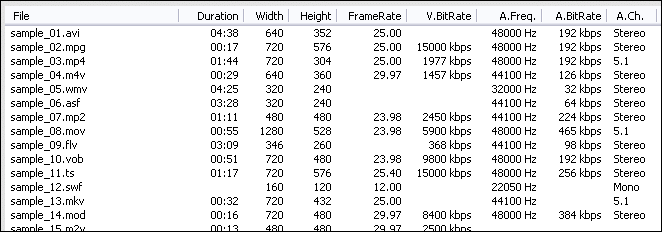
- Choose Output Format
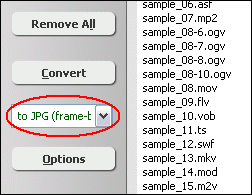
Click on combo-box of output format and then choose "to JPG (image sequence)".
- [Optional, for advanced user]
Set JPG Encoding Parameters
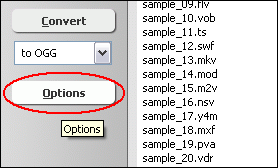
If you want to change JPG encoding parameters such as frame rate, video size,
aspect ratio, and so on, please click "Options".

And then, switch to tab "Video & Audio" and choose "JPG
(image sequence)" at "Output Format", and then set options
for image encoding.
- Convert RM to JPG/JPEG
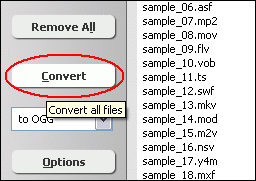
Click "Convert" to convert RM to JPG/JPEG sequence.

The software is converting RM files to JPG/JPEG.
- View and Browse JPG/JPEG Files
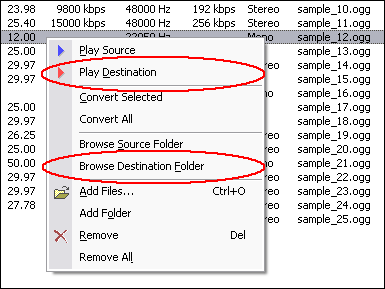
When conversion completes, you can right-click converted item and choose "Play
Destination" to view the first outputted JPG file; or choose "Browse
Destination Folder" to open Windows Explorer to browse the outputted JPG
files.
- Done
Top
RM to JPG/JPEG Software is 100% clean and safe to
install. It's certified by major download sites.

Convert RM to JPG/JPEG Related Topics:
|












